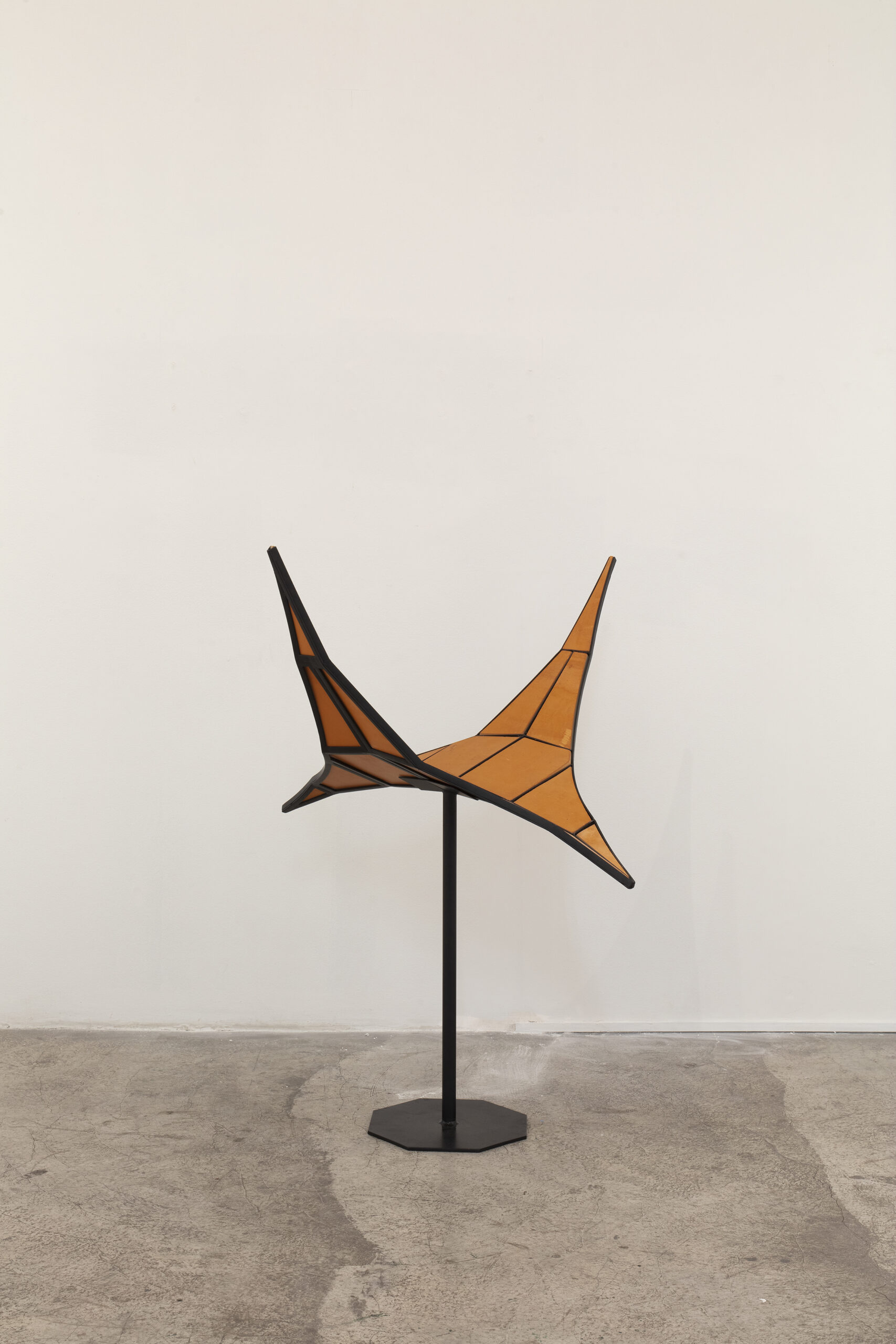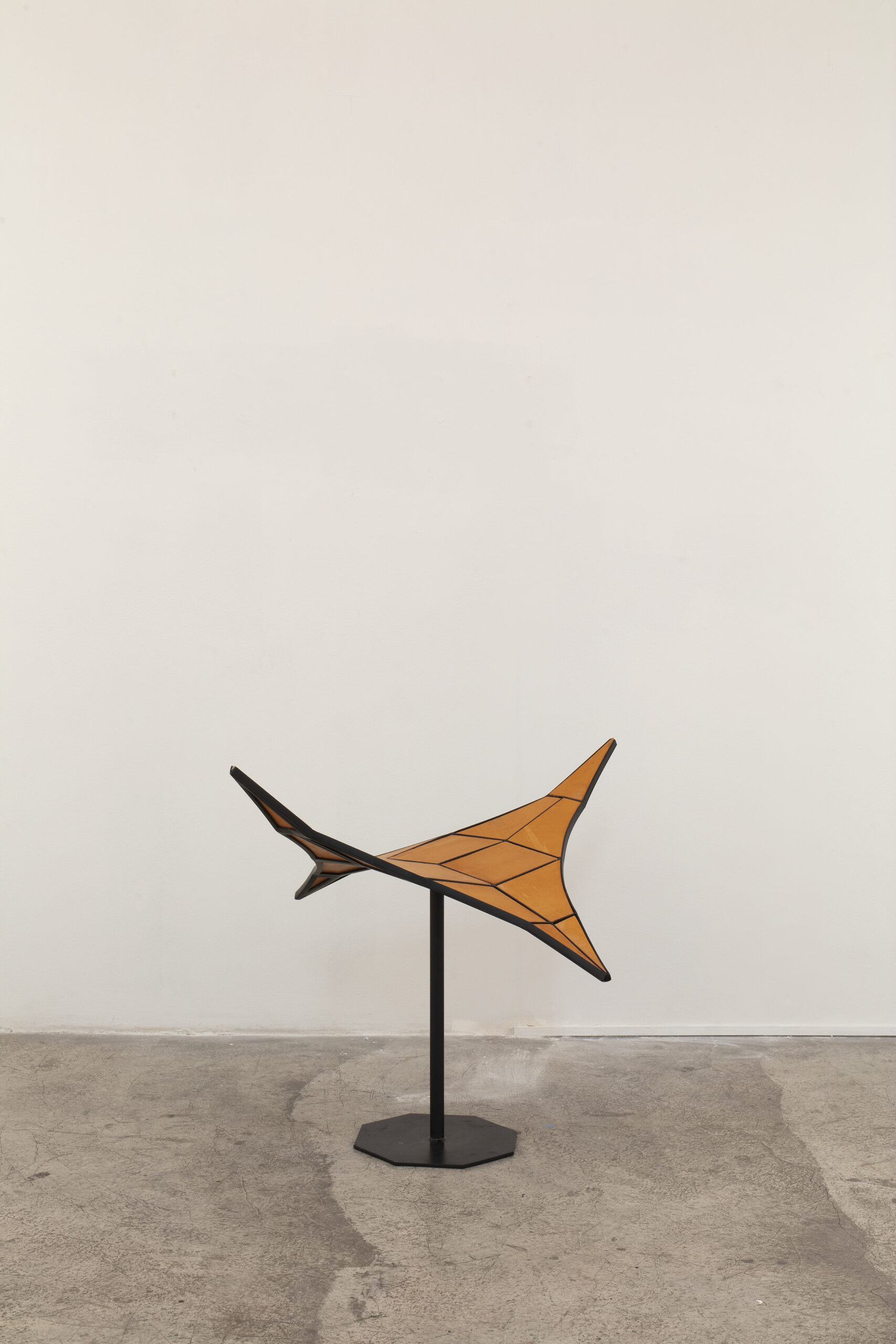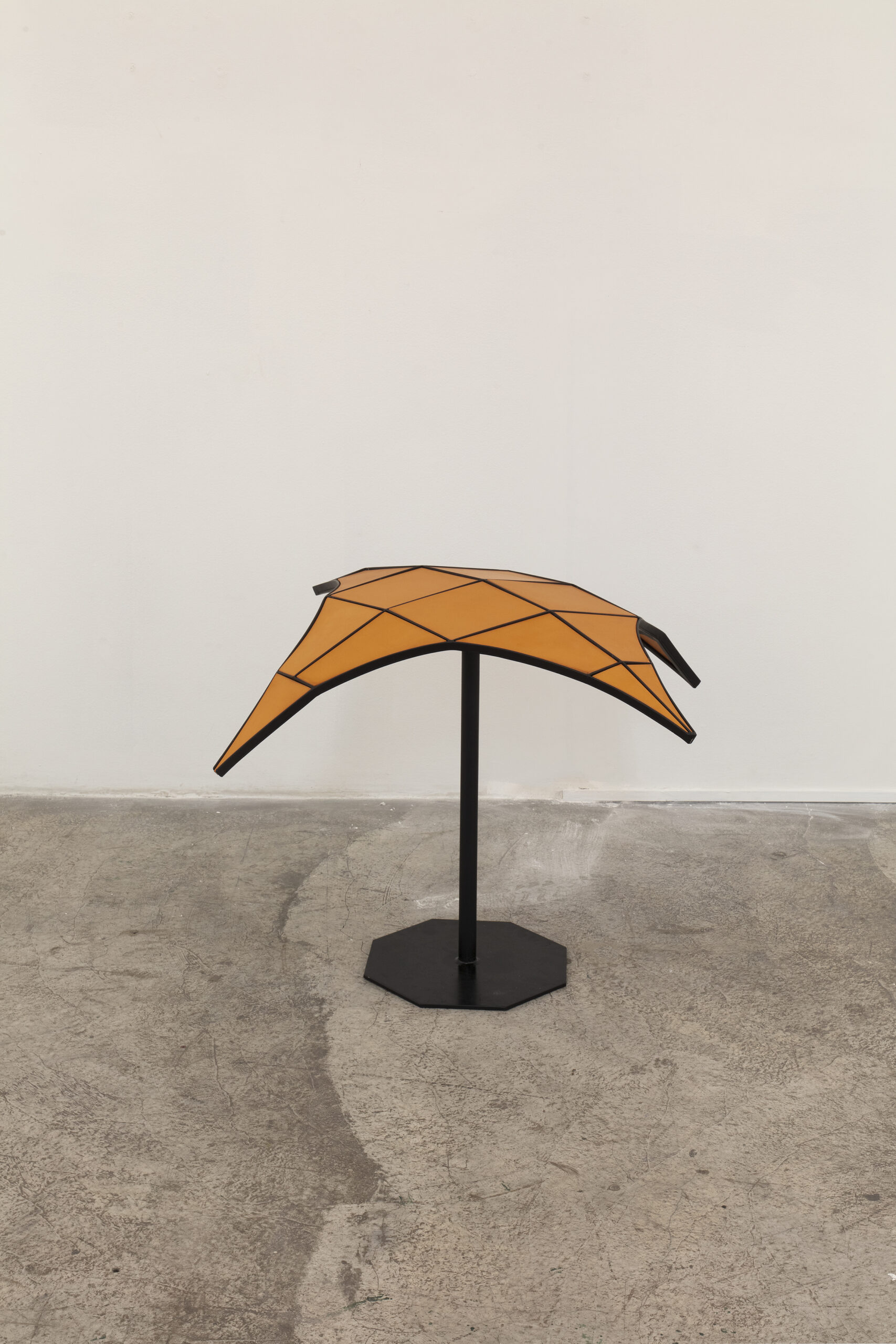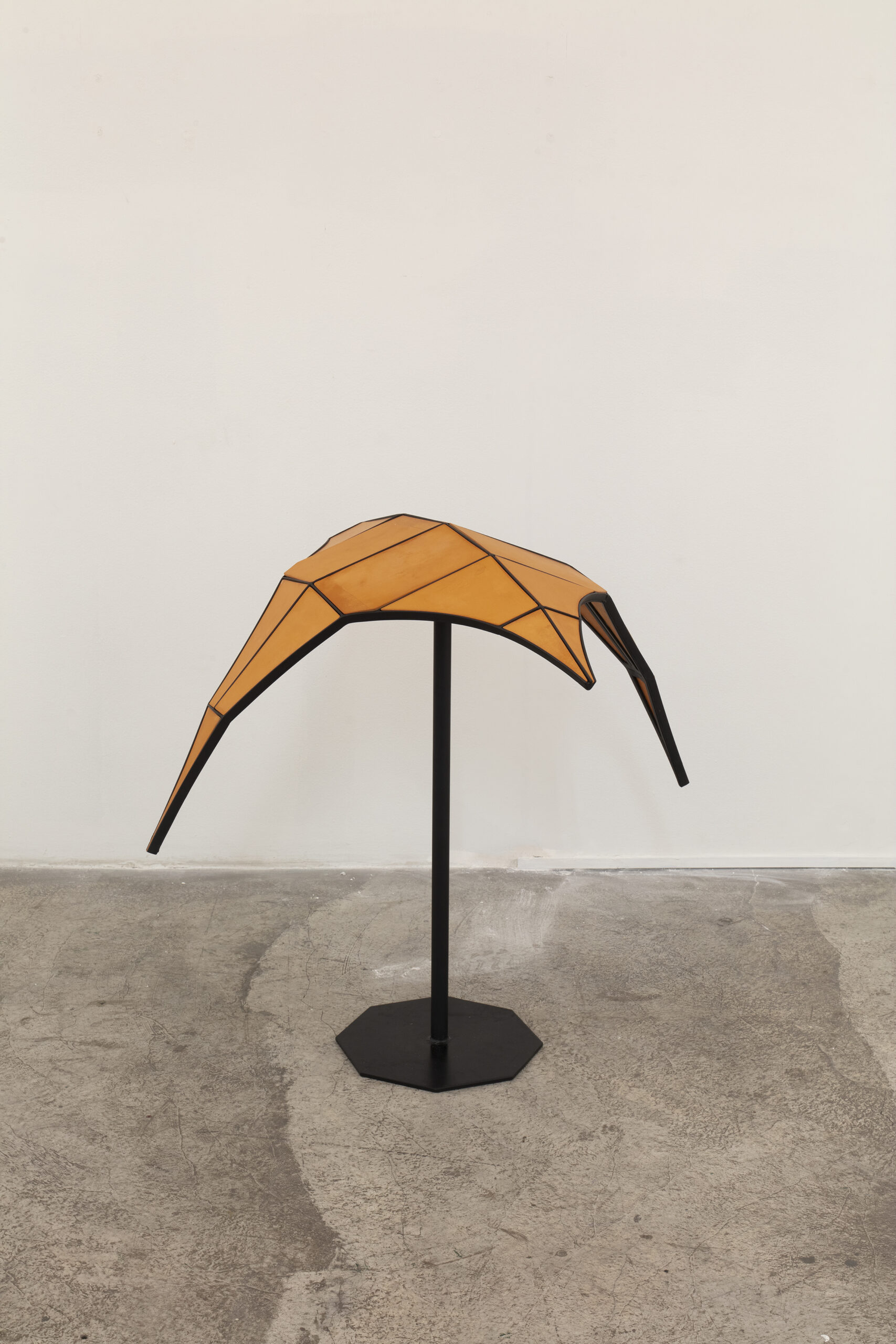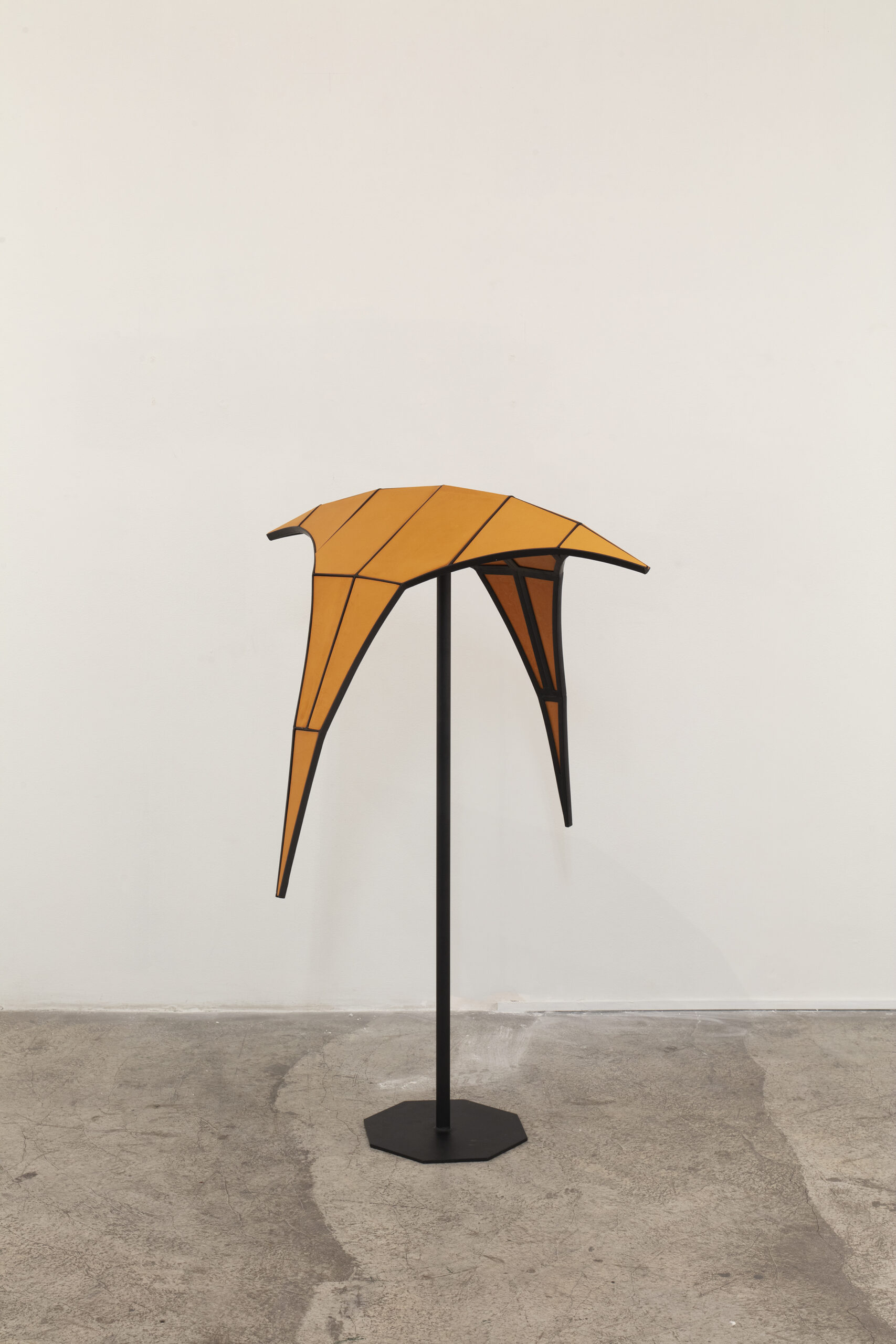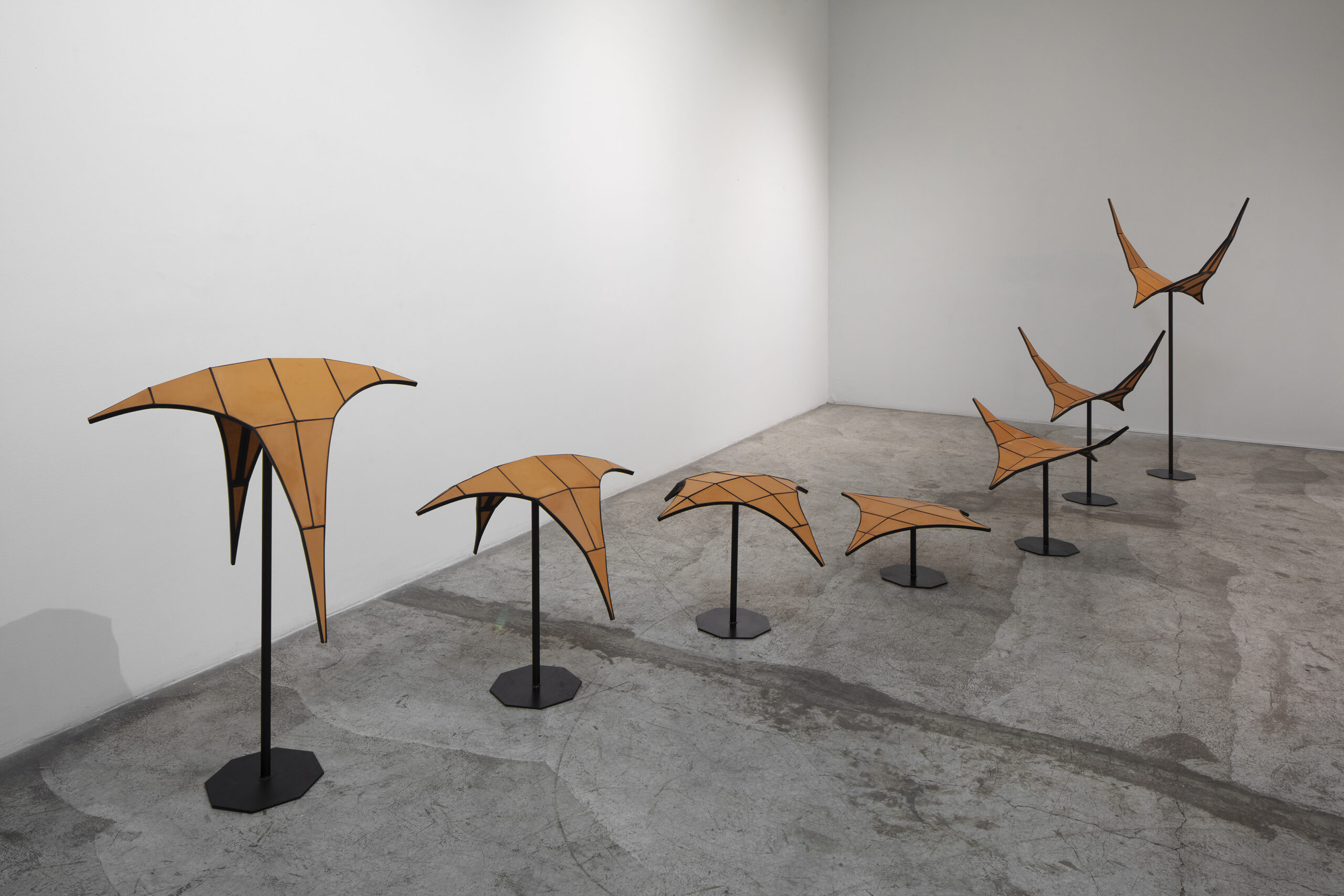The artist Héctor Zamora uses building materials to intervene in the public space, as well as the private one. This new work arises from an exercise in geometry first explored by the artist in 2009 with the work “Synclastic/Anticlastic,” produced for the 2010 Liverpool Biennial.
“Modulas” (2023) obeys mathematical laws governing synclastic and anticlastic surfaces. Through seven phases, the artist reveals the transformation of a synclastic structure, which is characterized by two dominant curves pointing in the same direction (ie. a bowl or a dome), in an anticlastic structure, whose guiding curves are opposed (ie. a saddle). For the realization of this work, the curves that make up the surface of the pieces were manufactured in a metallic profile, whose surface is subsequently formed from custom cut terracotta tiles. This technique, which Zamora implements for the first time, establishes a direct connection with his recent research on building materials, and in particular, with terracotta bricks and tiles. We can appreciate the zoomorphic connotation of the surfaces, accentuated by the impression of movement created by the sequence of the seven pieces, which evokes the movement of a manta ray underwater.
The work also evokes the research of architects Frei Otto, Buckminster Fuller and Félix Candela, all of whom inspired Héctor Zamora.
El artista Héctor Zamora recurre a materiales de construcción para intervenir el espacio público, así como el privado. Esta nueva obra surge de un ejercicio de geometría explorado por primera vez por el artista en 2009 con la obra “Synclastic/Anticlastic”, producida para la Bienal de Liverpool 2010.
“Modulas” (2023) obedece a leyes matemáticas que rigen las superficies sinclásticas y anticlásticas. Por medio de siete pasos, el artista muestra la transformación de una estructura sinclástica –caracterizada por dos curvas dominantes apuntando en la misma dirección (cf. un cuenco o una cúpula)–, en una estructura anticlástica, cuyas curvas directrices se oponen (cf. una silla de montar). Para la realización de esta obra, las curvas que conforman la superficie de las piezas fueron fabricadas en un perfil metálico, cuya superficie se forma posteriormente a partir de baldosas de terracotta cortadas a medida. Esta técnica, que Zamora implementa por primera vez, establece una conexión directa con su investigación reciente entorno a los materiales de construcción, y en particular con los ladrillos y tejas de terracotta. Se puede apreciar la connotación zoomórfica de las superficies, acentuada por la impresión de movimiento creada por la secuencia de las siete piezas, que evoca el movimiento de una mantarraya debajo del agua.
La obra evoca también las investigaciones de los arquitectos Frei Otto, Buckminster Fuller y Félix Candela, quienes inspiraron a Héctor Zamora.


